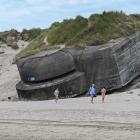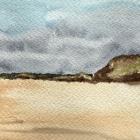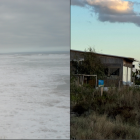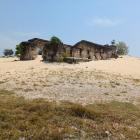Mediterranean Dunes: Environmental Authoritarianism

Plastic sea (greenhouse agriculture) on dune landscape. El Ejido-Cabo de Gata (Almeria). © Google and Airbus.
Plastic sea (greenhouse agriculture) on dune landscape. El Ejido-Cabo de Gata (Almeria). © Google and Airbus.
© 2024 Google and Airbus
The copyright holder reserves, or holds for their own use, all the rights provided by copyright law, such as distribution, performance, and creation of derivative works.
Throughout the twentieth century, dunes have been subjected to an intense process of destruction by human action. The Cabo de Gata dunes constitute an ecosystem of high-socio-environmental vulnerability. Cabo de Gata is located in the province of Almeria, in the Andalusia region of Southern Spain, a beautiful protected area known for its volcanic landscapes, pristine beaches, rugged coastline, and traditional fishing villages. Situated right along the Mediterranean Sea, it is one of the driest and sunniest places in Europe.
During the Francoist dictatorship, in the second half of twentieth century, a new model of land management was implemented to expand the agricultural frontier, incorporating croplands under a plastic-based mode of cultivation that was intensively extractive in material resources and water matrix. The dunes of Cabo de Gata then underwent an intense process of ecosystem modification, as their sand was extracted and transported inland to create artificial soils in plastic greenhouses. These plastic-covered crops were intended for intensive vegetable and horticultural production to supply the Spanish food market. Throughout the 1960s, 70s, and 80s, this agricultural frontier expanded to increasingly supply the rest of Europe. The result was a reduction in the area of coastal dunes, which were also under pressure from the growing tourist industry. Since the 1990s, with the advent of democracy and the establishment of autonomous regional governments, sand extraction from the dunes in Andalusia has stopped. This shift was the result of the implementation of environmental conservation policies, which included the designation of the entire dune area as a National Park and a Natural Reserve.
Nevertheless, in the last 40 years, industrial agriculture has been developed in this arid agroecosystem, especially in the Almeria area, affecting the dunes and community fishing practices. Such extractive examples of high-yield agriculture can be qualified as ecocide; the loss of biocultural knowledge of sentient-thinking communities.

















